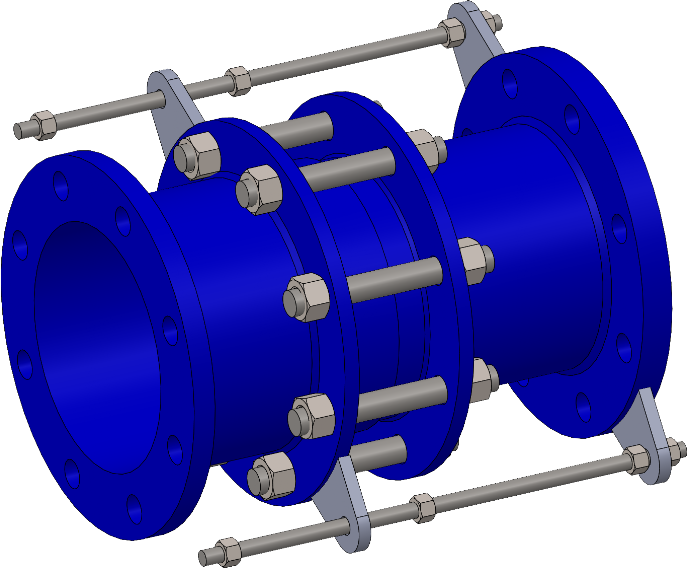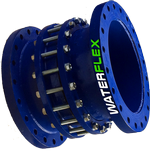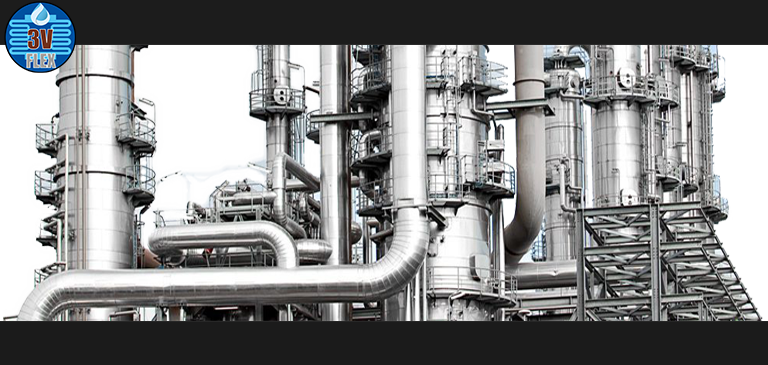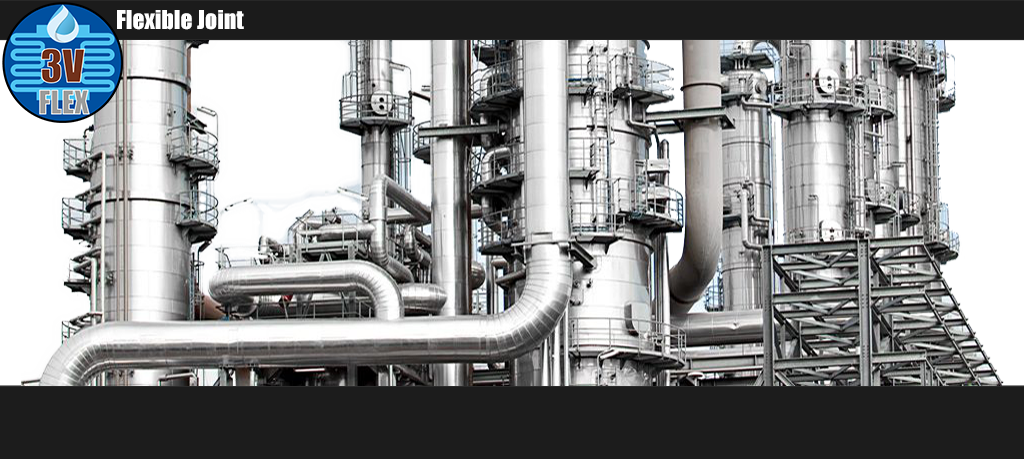
Expansion joints type LTF for PVC - PP pipes
Plastic pipes for aqueducts, gas pipelines, sewers and other similar uses find a wide range of installations. Compared to normal steel pipes, plastic pipes have a very high thermal expansion coefficient.
The problem of thermal expansion of the tube arises in long length straight pipes, which in many cases can reach high values.
Take for example a straight pipe about 40 meters long. Considering a thermal delta of about 30 ° C between installation and operation, the pipe will have an overall axial expansion of about 240 mm. The same steel pipe would have an overall expansion of about 10 mm.
For this reason we have different types of expansion joints made both in PVC and in metal, which cover all installation requirements, both with plastic and steel lines.

LTF type joint made entirely of steel
Manufacturing diameters: DN 50 (63) - 80 (90) - 100 (110) - 125 (140) - 150 (160) - 200 (200) - 250 (250) - 300 (300)
(the values in brackets refer to the diameters of PVC pipes) - other diameters up to DN 2000 on request
Maximum stroke: from +/- 100 mm up to +/- 150 mm in standard versions (other runs on request)
Manufacturing material: Carbon steel / stainless steel
Nominal pressure: 16 bar - 25 bar; maximum temperature 180 ° C (limited by the material of the seals)
Sealing gaskets: EPDM /NBR/ VITON (other types on request)
UNI PN 6/10/16/25 end flanges (on request flanges with DIN / ANSI holes)
General information for installation:
1.The expansion joints type WPP and LTF must be installed only on horizontal sections of pipes and cannot be used to absorb transversal movements to the axis of the pipe.
2. Before use and installation, it must be checked that the joint is suitable for the operating conditions of the system, with particular regard to:
- Pressure and temperature of the fluid used
- Compatibility of the joint material with the type of fluid used
- Linear expansion calculated less than the maximum stroke of the joint.
3. The joint must be installed in a section of pipe between two fixed points. The installation length must not be greater than the intermediate joint length. In the event of excessive movements or inadequacy of the fixed points, the joint can be removed with consequent leakage of the fluid. This point must be checked very carefully when the fluid transported is potentially dangerous for the environment, human health and the damage caused by pollution.
Example of calculation of the expansion of a pipe section:
Thermal expansion coefficients of thermoplastic pipes (average values x thermal delta <40 ° C):
PVC: 0.08 mm / m. ° C
PE: 0.2 mm / m. ° C
PP: 0.14 mm / m. ° C
Length of the pipe: 50 meters. linear
Total fluid temperature difference: 35 ° C
Hose type: PVC
Total expansion of the tube = 35 x 0.08 x 50 = 140 mm. For PE pipe the total expansion is 350 mm and for PP the expansion is 245 mm.
The thermal expansion coefficients shown above indicate how many millimeters a tube of one meter in length stretches or shrinks when the temperature varies more or less than 1 degree Celsius or Kelvin. For the laying of overhead ducts, it is very important to take into account the expansion and positioning of the fixed points. For underground pipes, with interlocking glasses, the effects of the sun and temperature variations between day and night should not be overlooked. In particular for the EP.



































